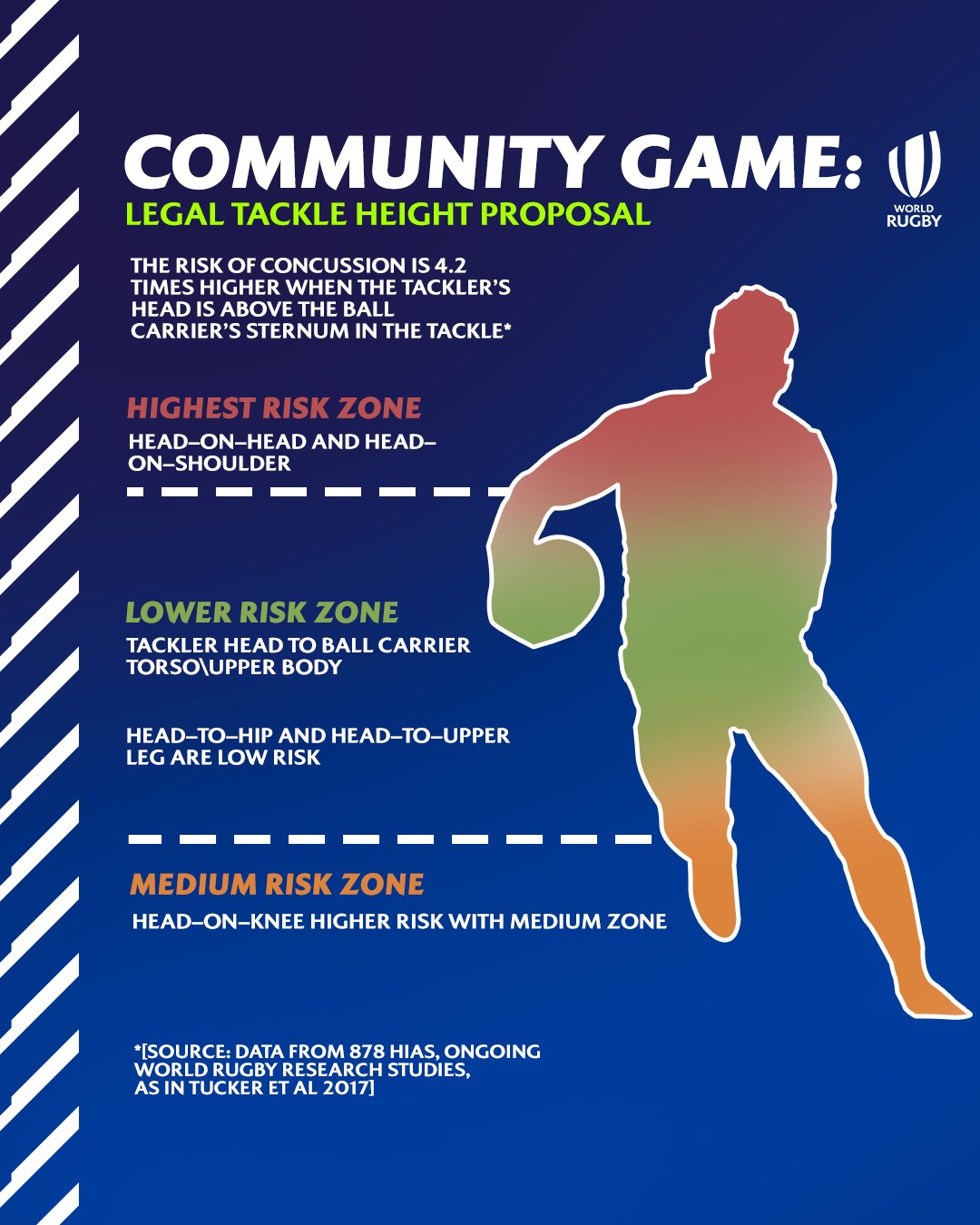Why trial the lower tackle height?
The trialling of the tackle height is the result of over six years of research into injuries which occur during the tackle.
The tackle is the most injurious part of the game:
- 74% of head injuries derive from the tackle area
- approximatly 70% of head injuries which occur as a result of the tackle relate to the tackler
- the risk of suffering a concussion in the tackle is 4.2 times higher when the tackler's head is above the ball carrier's sternum.
Research shows that lowering the tackle height significantly reduces head-on-head contacts as well as concussions.
- Trials in France resulted in a 64% reduction in head-on-head contacts and a 23% reduction in suspected concussions.
From the perspective of the ball carrier, head injuries happen almost exclusively because of direct forceful impacts to their head. A small proportion are the result of ground impacts and whiplash, but approximately 90% are the result of direct contact. The rationale for lower height is that if tacklers no longer make forceful contact with the ball carrier’s head, the ball carrier’s head injury risk will be significantly reduced.
For the tackler, reductions in risk do not happen because the tackler’s head is removed from risk, for this is not possible, but rather happen when the tackler’s head is in relatively safer locations on the ball carrier’s body. Evidence suggests that a lower tackle height will achieve this, because it places the tackler’s head in the relatively safer proximity of the ball carrier’s upper body, hip and upper leg, and only if the tackle drops to the level of the knees does risk increase again.
